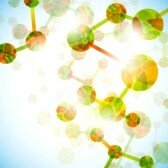AUTISM RESEARCH PROGRESS!!!
Two recent studies suggest it may become possible to detect the early onset of autism before any previous clinical methods permitted that to occur, which will mean it will become possible to begin intervention much earlier, perhaps as early as six months of age. Here you see Ron Oberleitner of Behavior Imaging Solutions, Inc. explaining their observational sampling system for kids with ASDs.
As effective biological treatments eventually become available, that also means it should be possible to start treatment very early, possible before significant developmental impairment. A third study indicates girls appear to be protected against autism, which raises the question, “Why?” What is it about being a girl that is protective? Maybe there’s clue to protecting ALL children from autism.
Automated Visual Behavioral Sampling to Detect Autism
For several years I’ve been discussing with Ron Oberleitner, the CEO of Behavior Imaging Solutions, Inc. about using his observational technology for analyzing the causes of behavior challenges in autism, and perhaps to shed light on possible solutions. Basically, Oberleitner’s system collects repeated large visual samples of an individual’s behavior in their natural environment, and enables the clinician to detect anything occurring several seconds or minutes before and after the event, to look for patterns. Now, in collaboration with professionals at several universities, he is going to try to use the same technology to detect subtle behavioral differences as part of an intake assessment to determine whether than can be used to screen for possible ASD diagnosis.
Behavior Imaging Solutions (BIS) has been awarded a $2.2 million Small Business Innovation Research (SBIR) grant from the National Institute of Mental Health (NIMH) to study a technology platform and system that may improve and expedite the diagnosis of autism. BIS is collaborating with Southwest Autism Research & Resource Center and Marcus Autism Center, and technology partner, Georgia Institute of Technology. “We have expanded our Behavior Imaging® platform to enable the child’s caregiver to capture ‘behavior specimens’ via video clips on smartphones and share confidentially with special child development experts, anywhere in the world,” said Ron Oberleitner, BIS CEO and founder. “We believe the BIS technology can transform diagnostic assessment and dramatically reduce the waiting period, particularly for those children and their families without nearby access to health care providers,” Oberleitner said.
It is obviously too early to tell how effectively the technology will permit early screening and diagnosis, but it is clearly an important step in the right direction. http://www.behaviorimaging.com
For several years I’ve been discussing with Ron Oberleitner, the CEO of Behavior Imaging Solutions, Inc. about using his observational technology for analyzing the causes of behavior challenges in autism, and perhaps to shed light on possible solutions. Basically, Oberleitner’s system collects repeated large visual samples of an individual’s behavior in their natural environment, and enables the clinician to detect anything occurring several seconds or minutes before and after the event, to look for patterns. Now, in collaboration with professionals at several universities, he is going to try to use the same technology to detect subtle behavioral differences as part of an intake assessment to determine whether than can be used to screen for possible ASD diagnosis.
Behavior Imaging Solutions (BIS) has been awarded a $2.2 million Small Business Innovation Research (SBIR) grant from the National Institute of Mental Health (NIMH) to study a technology platform and system that may improve and expedite the diagnosis of autism. BIS is collaborating with Southwest Autism Research & Resource Center and Marcus Autism Center, and technology partner, Georgia Institute of Technology. “We have expanded our Behavior Imaging® platform to enable the child’s caregiver to capture ‘behavior specimens’ via video clips on smartphones and share confidentially with special child development experts, anywhere in the world,” said Ron Oberleitner, BIS CEO and founder. “We believe the BIS technology can transform diagnostic assessment and dramatically reduce the waiting period, particularly for those children and their families without nearby access to health care providers,” Oberleitner said.
It is obviously too early to tell how effectively the technology will permit early screening and diagnosis, but it is clearly an important step in the right direction. http://www.behaviorimaging.com

Researchers from Yale University School of Medicine found that early signs of autism can be detected in 6-month-old infants, Biological Psychiatry. The study involving younger siblings of children with ASD have made some inroads toward identifying early diagnostic markers. If one sibling has ASD, the other siblings have 35 times the average risk of developing the disorder. The risk is even higher in identical twins: if one has ASD, 9 out of 10 times, the other twin also has it.
Dr Katarzyna Chawarska, Ph.D., followed a group of infants from three months to three years of age. The infants were assessed in their third year of life when some of them were found to have ASD. They tracked eye movements of 6-month-old infants—67 at high-risk for ASD because their siblings had the disorder, 50 at low-risk because no one had ASD in their family—as they watched a video of an actress playing with toys and making a sandwich. Periodically the actress would speak directly to the camera and try to engage the baby using greetings (“How are you, baby?”), compliments (“You are so cute!”), and comments (“Did you see it? It was so much fun!”). The video did not try to attract the children’s attention by including the usual “attention getters” such as music. Rather, the children were allowed to look spontaneously at whatever they decided was most important to them.
Compared with the control groups, infants later diagnosed with ASD, showed a decreased ability to pay attention to the complex social scene. They also spent less time looking at the actress and her face, but they did not look longer at the toys present in the scene. These findings suggest that difficulties in attention to people might precede the excessive interest in objects often reported in older children with ASD. Chawarska, K. et.al. (2013) Decreased Spontaneous Attention to Social Scenes in 6-Month-Old Infants Later Diagnosed with Autism Spectrum Disorders. Biological Psychiatry. doi:10.1016/j.biopsych.2012.11.022

I’ve been saying for years with tongue in cheek to parent groups, that if you want to prevent your children from developing autism, make sure they are girls. Not that you can or should do that, but you get the idea. A new genetic study tells us something we all suspected, but didn’t have direct proof, females appear to be protected against developing autism. In this study of NON-IDENTICAL (FRATERNAL) TWINS, they found that female sex protected girls from autistic impairments, and that girls may require greater familial risk (i.e. more family members with significant autism traits) to show the symptoms. [Robinson, EB et.al. Examining and interpreting the female protective effect against autistic behavior. Proc. National Academy of Sciences. Published online before print February 19, 2013, doi: 10.1073/pnas.1211070110